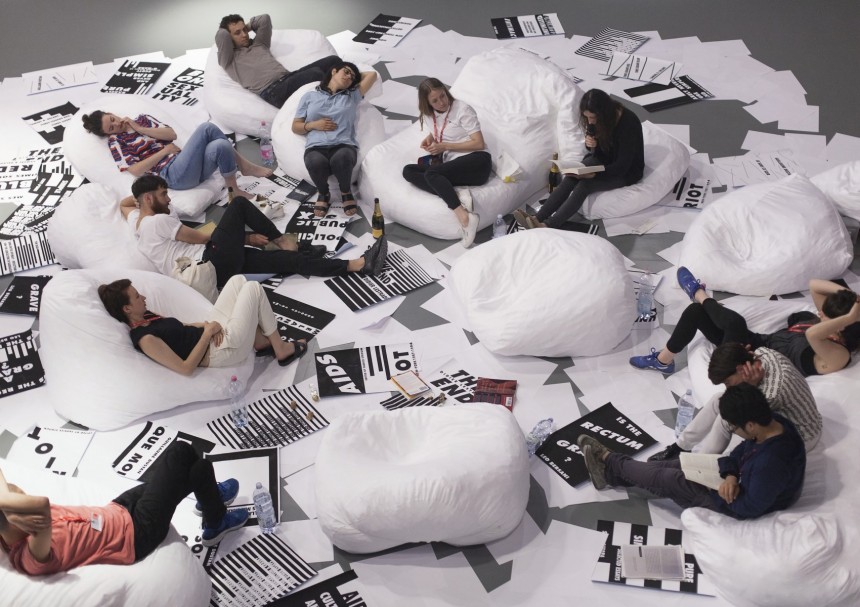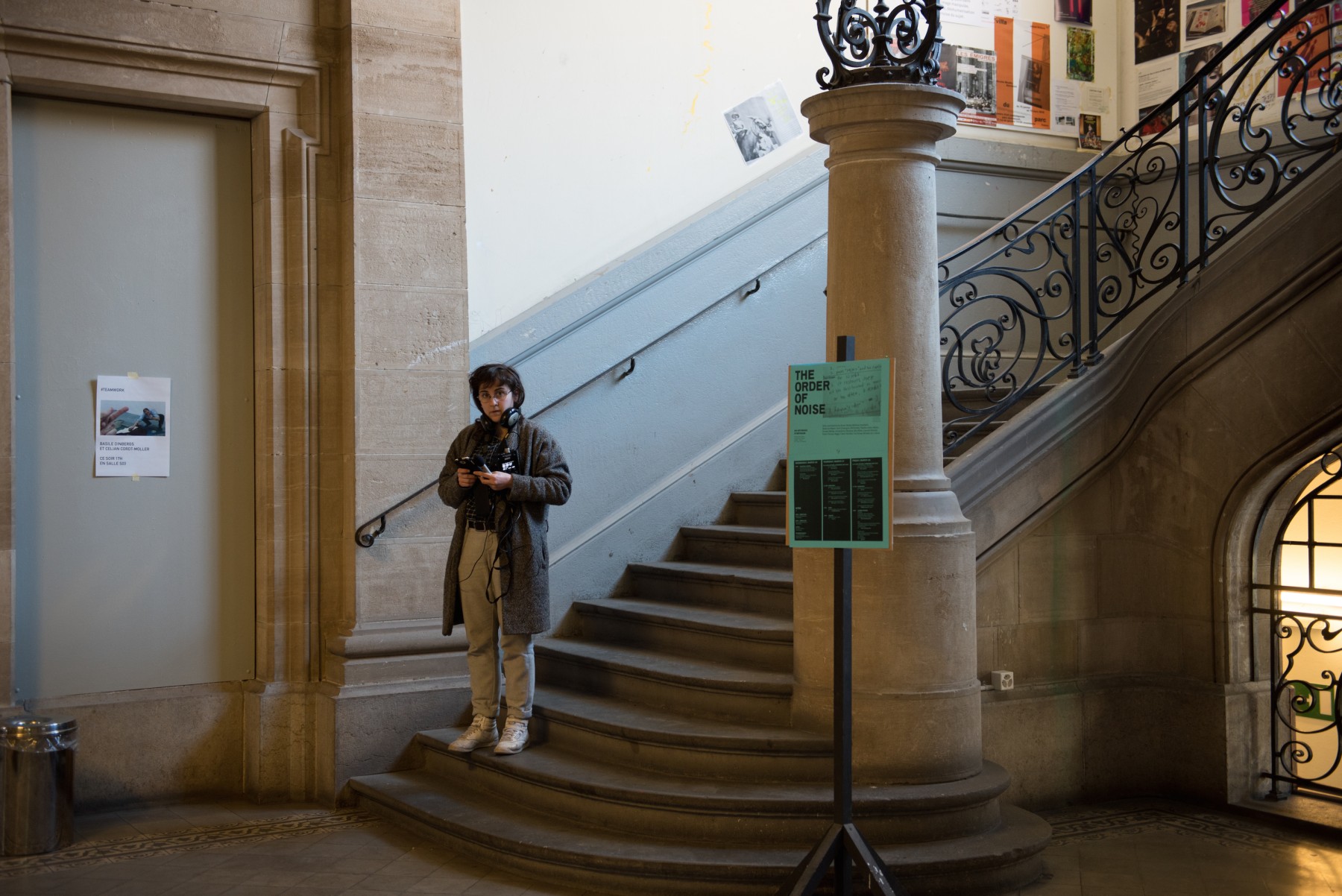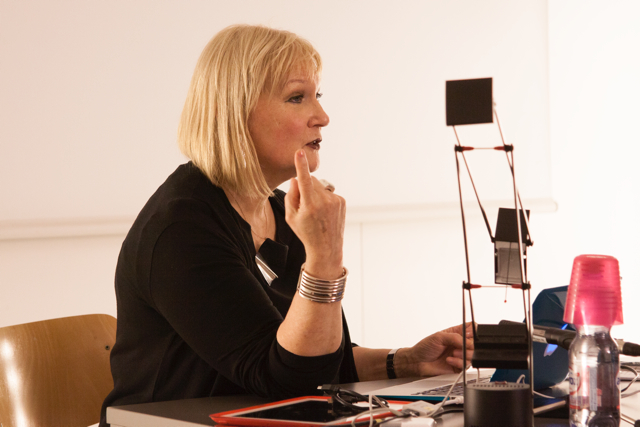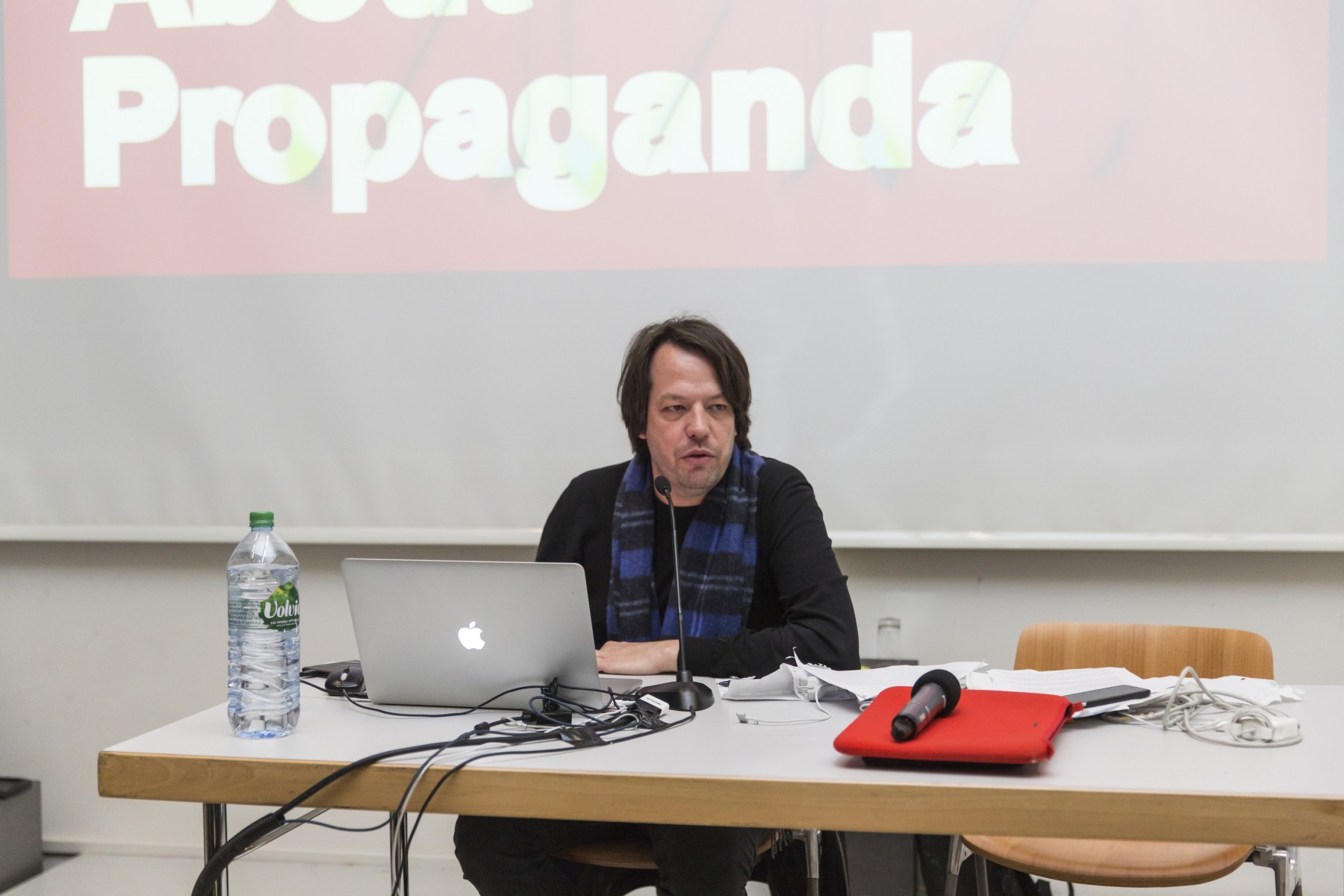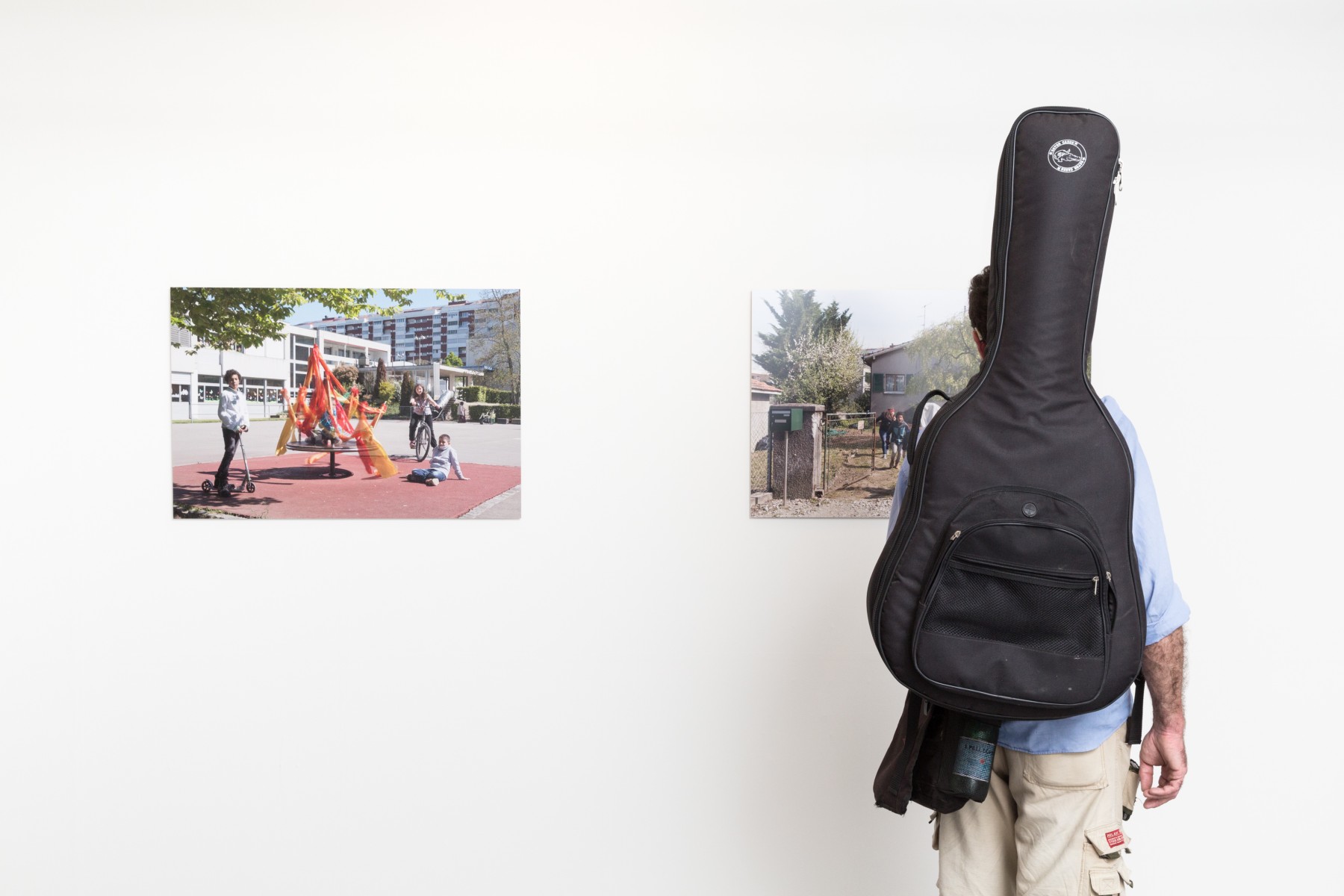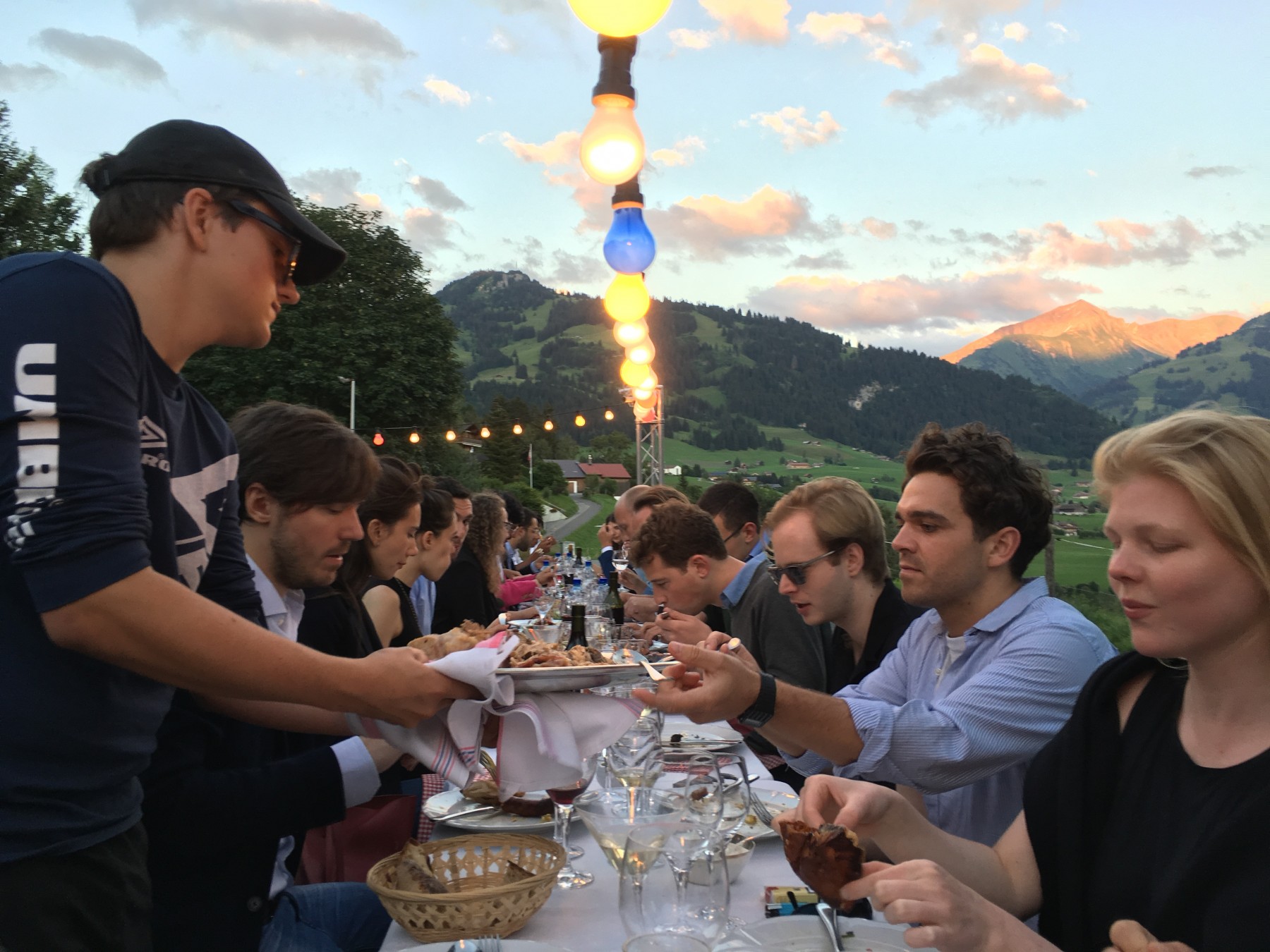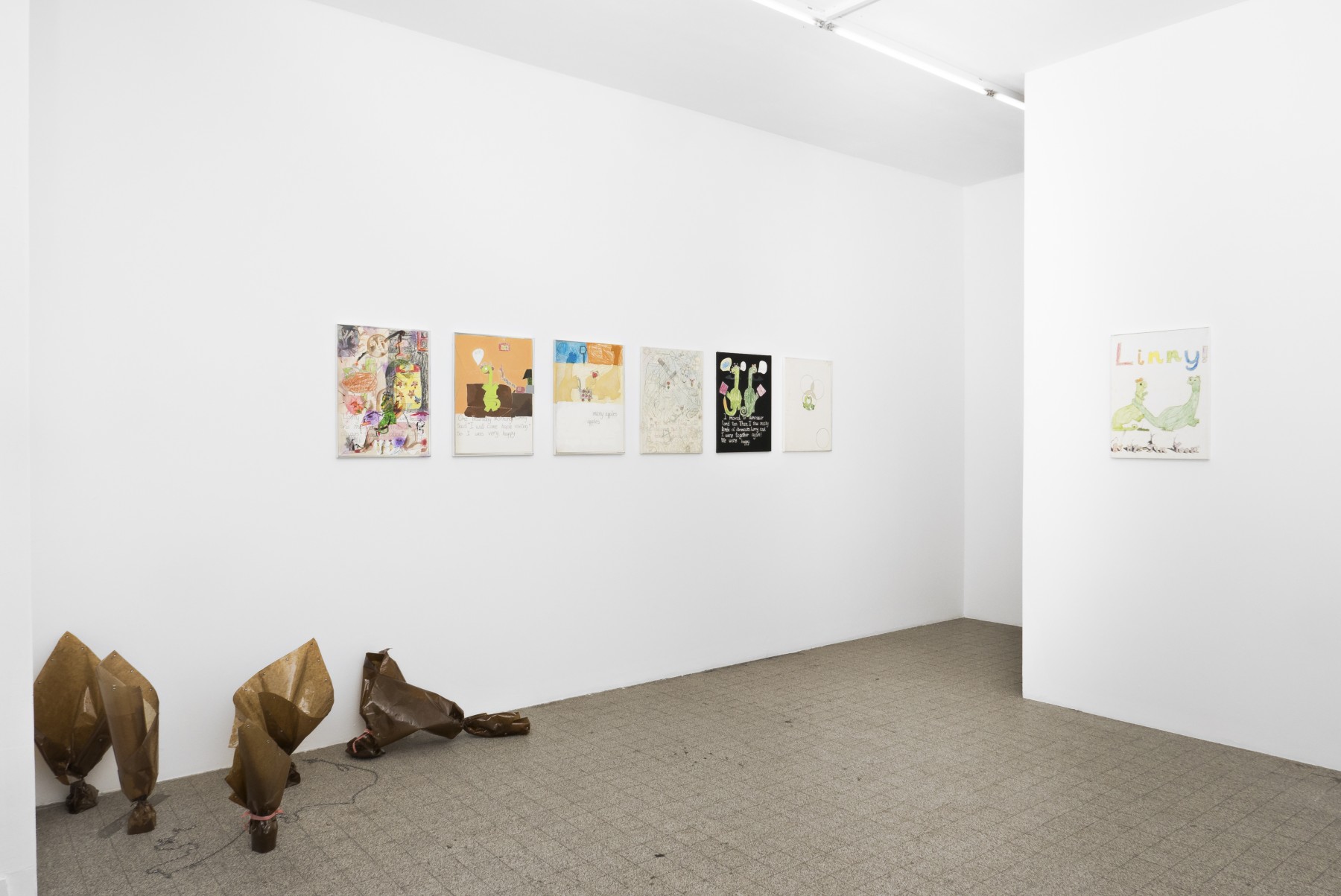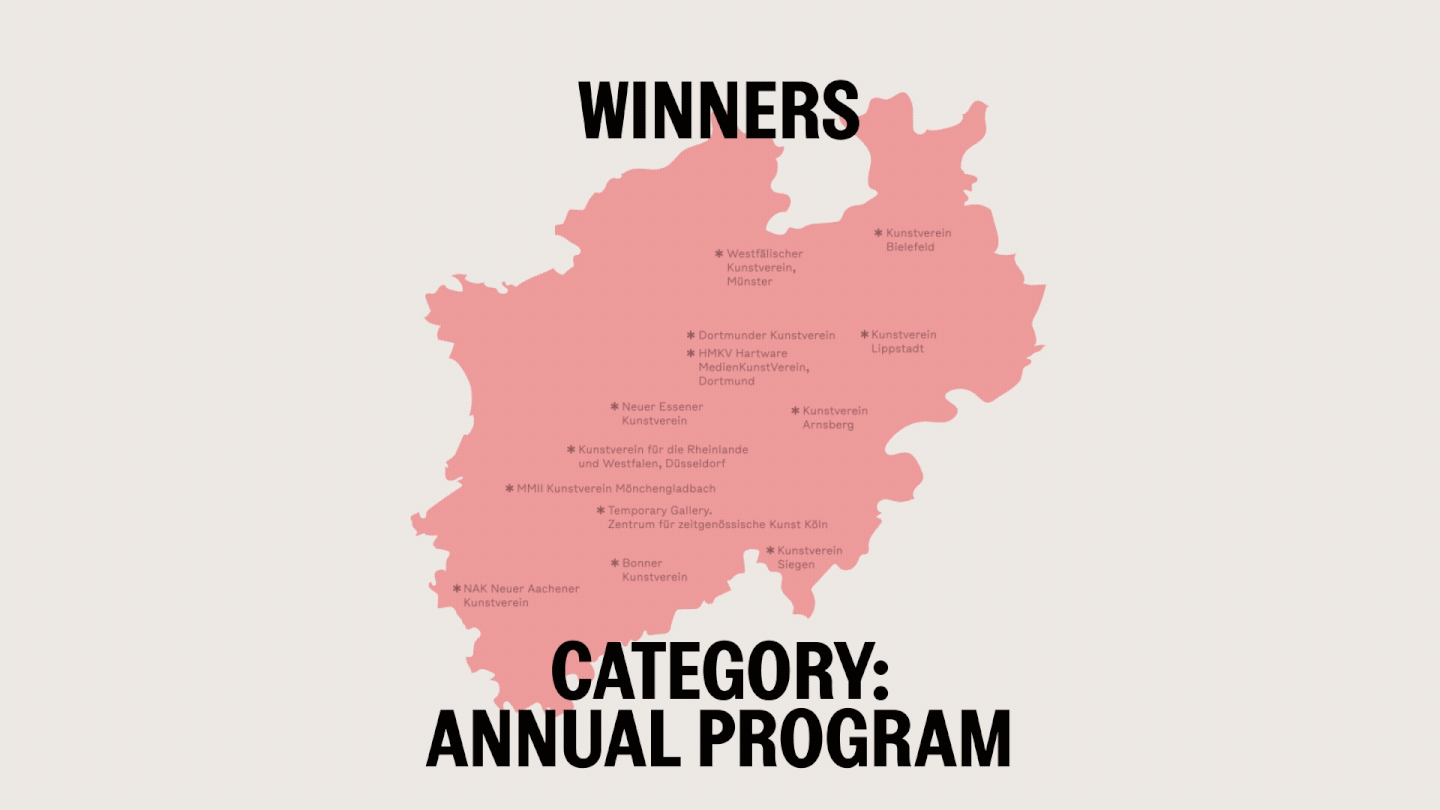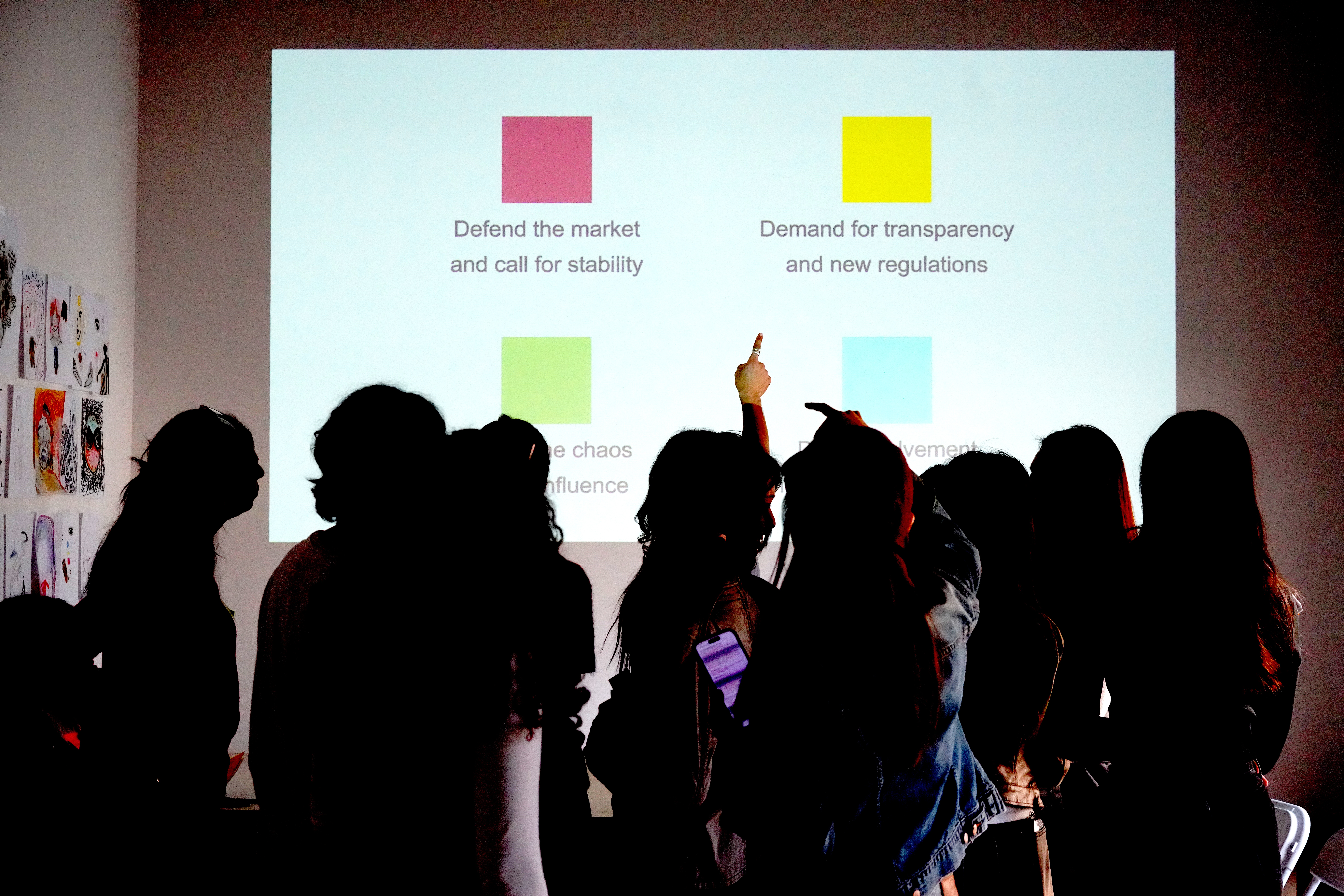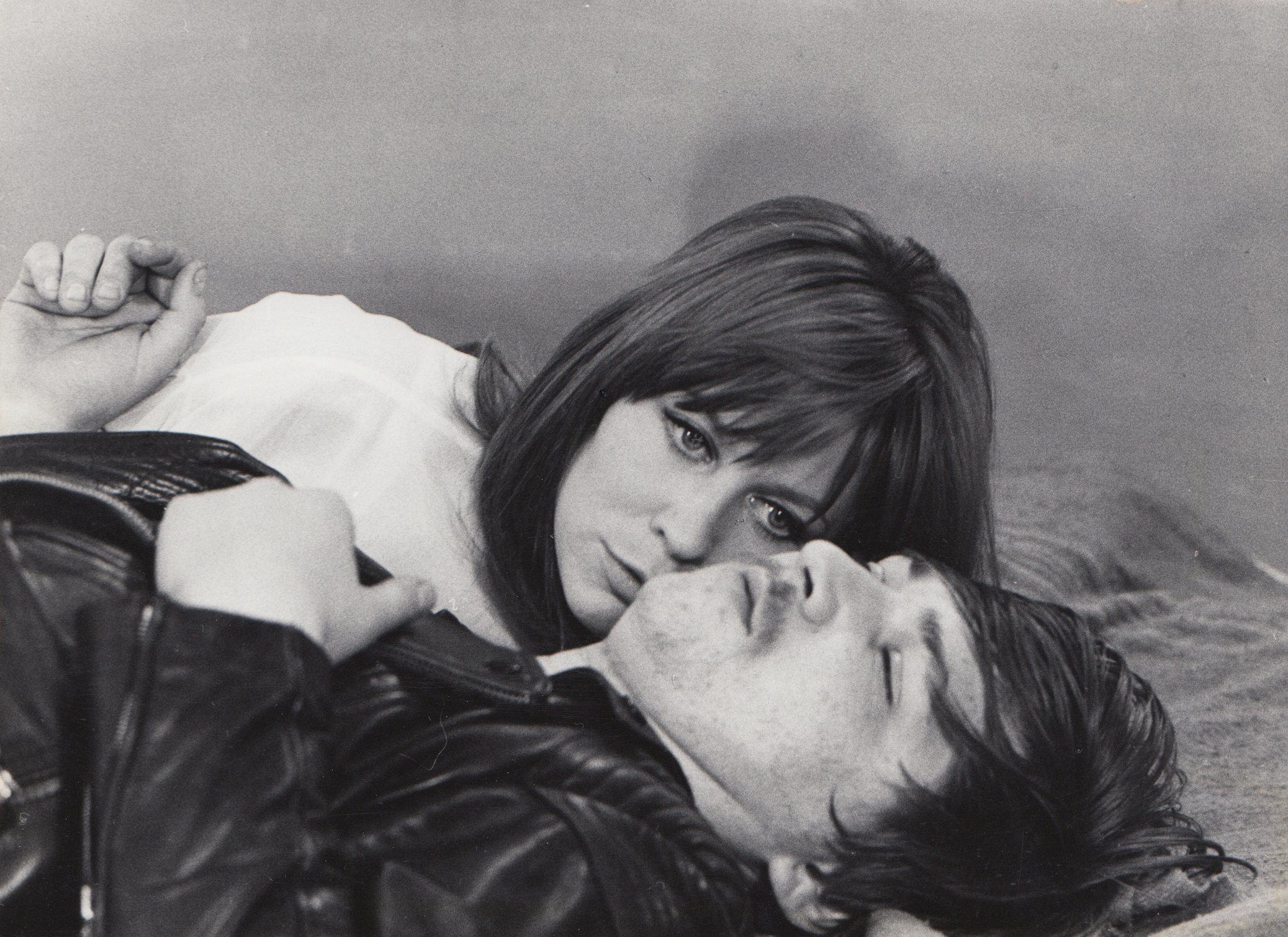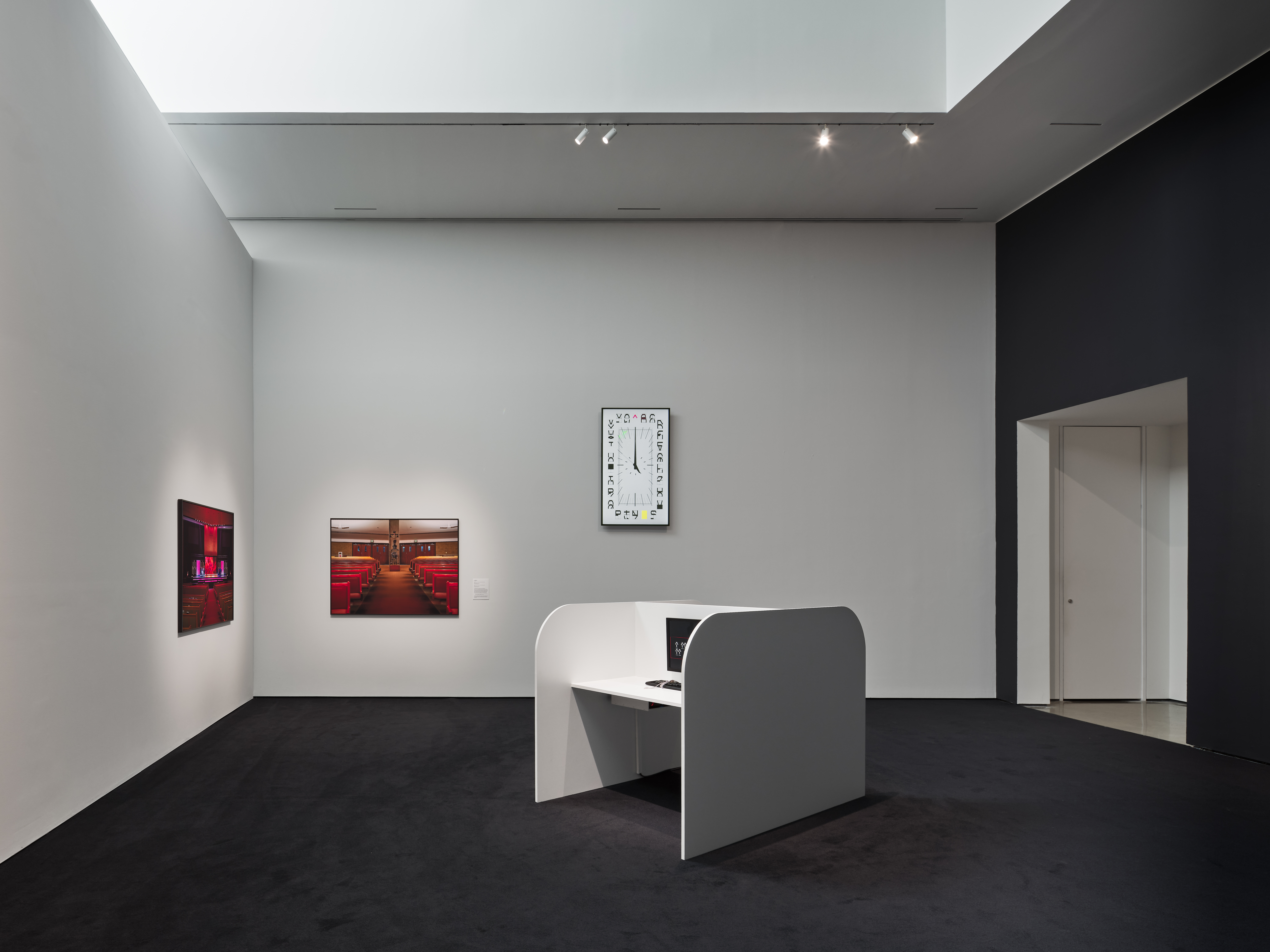Arriving by train in Geneva from Paris, I was welcomed to the Hotel Adriatic, a charming, unassuming hotel where many of the visiting guests and teaching faculty of HEAD, Geneva’s University of Art and Design (Haute École d’art et de design), often meet over the breakfast table when lodging there in the city. One regular is French artist and WORK.Master professor Lili Reynaud-Dewar, who invites students outside of customary studio visits in the daytime to the confines of her own hotel room on weekly evenings—a perfect experiment for an artist preoccupied with the “boundaries of biography.” Gazing into the looking glass of Reynaud-Dewar’s hotel room, her work as an artist and instructor is revealed, from her consideration of the manifold ways that beds represent our secret selves to the way the private lives of various artists are embraced in her curriculum. The title of her course, “Teaching Like Teenagers,” is inspired by the title of an exhibition by German artist Michael Krebber, “Puberty in Teaching” and her methodology also reflects Krebber’s teaching style—who also holds meetings with students outside of the classroom. Reynaud-Dewar’s group examines subjects as diverse as the work of French writer Guillaume Dustan, or American author Paul Bowles, or the know-how of orality, conversation, usability, and performance in collective practice. In a sense, it is a lesson on life-writing: students read texts together by authors who use their own life as the subject for their art. As I tucked into bed that evening, I couldn’t help but imagine the countless artists and guests who have passed through the Hotel Adriatic (perhaps sleeping in my bed?) since the school was established.
HEAD is an amalgamation of the Geneva School of Fine Arts (l’École supérieure des beaux-arts de Genève) and the School of Applied Arts (Haute École d’arts appliqués), which both date back to the eighteenth century. The merger was put into effect in 2006 by the school’s current director, French art historian Jean-Pierre Greff, who previously was director at Strasbourg’s University of Arts (Haute école des arts du Rhin) for a decade. Today, HEAD is both one of the oldest fine arts schools in Switzerland and the youngest. Since 2008, its master’s programs have been organized under the acronyms CCC, TRANS, and WORK.Master: three distinct fine arts programs concentrating on research, transdisciplinary education, and self-driven studio practice, respectively. Conducted in both French and English, the course of study in each of the three programs lasts two years, and culminates in a written master’s thesis. Around 120 students attend the three programs in total, with a rotation of sixty students per year pooled from 150 applications. HEAD’s MFA student body is diverse. On average there is a one-to-one Swiss to foreign ratio, and all students pay CHF 650 in tuition per semester. The same fees apply for international students who typically face higher tuition in similar schools across the world. Along with an intergenerational mix of students, heterogeneity in artistic/academic backgrounds is encouraged. There seems to be a productive tension among groups within the larger student body so as to support the school’s idiosyncratic educational philosophy.
The diversity nurtured at HEAD reflects, in a sense, a longer history of art education in Switzerland. Until the 1990s many artists in Switzerland were self-taught and, in line with the country’s libertarian tradition, they resisted official art education. One case in point is Olivier Mosset, who, as a young artist, worked for Jean Tinguely and Daniel Spoerri. Others like John Armleder, Christian Marclay, and Fabrice Gygi studied at the School of Fine Arts, each with a foot in and out of the academy, engaging in extra-artistic activities, such as experimental music or the underground squat scene. After May 1968, the School of Fine Arts, while holding firm to its position as the establishment, quickly became an annex to the squat culture. Thus, a double history was called to arms. Over coffee the next morning with Deputy Director Katrin Kettenacker at HEAD’s Boulevard Helvétique building, Dean of the School of Fine Arts, Yann Chateigné, described HEAD’s ethos as “building not only careers, but critical minds, embedded in a tradition of pedagogical situations that are creative, but also open to other forms of questioning, not only centered on studio art practice.”
Chateigné, a French curator and researcher from Paris, previously worked at CAPC Bordeaux Museum of Contemporary Art (Musée d’art contemporain de Bordeaux) before being appointed as the dean of the School of Fine Arts at HEAD in 2009. Rather than turning the institution inside out—renaming departments and radically altering the institution’s image at the start of his post—Chateigné opted for a slow yet transformative approach that can be attributed to letting the faculty and students adapt the program to their needs. Chateigné’s employment of the word “we” when he speaks intimates a thoughtful ecosystem of pedagogical aims, networks, and force fields. The results under his leadership have been unprecedented in that the institution feels remarkably fresh, yet seasoned across generations, experiences, and expectations.
CCC
“How can we make our way in the world through a situational understanding of our position within such complexity?” reads a prompt about the research-based master’s program CCC (Critical Curatorial Cybernetic Studies). The program is the most international of the three MFAs, and the smallest, with around thirty enrollees per year. CCC has experienced a host of name shifts in its existence, including alterations such as “cross-cultural,” “conceptual,” “computational,” “constellational,” “compositional,” “conversational,” “cyclonopedic,” “controversial,” and “confessional.” Initiated in 2000 by postcolonialist/feminist scholar Catherine Quéloz—now an honorary professor at HEAD—and art historian Liliane Schneiter, CCC was founded upon the ongoing study of historical and alternative methods of teaching, such as anarchist and feminist education and radical and creative pedagogies. CCC has a rather peculiar history, as it was first developed by Quéloz within the school but somewhat hidden from the administration. Chateigné describes the history of CCC as such: “CCC was implemented in between the institutional lines, not in the sense of subversion, but as a discrete and radical pedagogical unit that grew silently in a space of freedom left open by a gap, which also echoed desires by teachers, the students, the scene … It was also properly underground because it was literally located under the ground, in our building named Général-Dufour. [Quéloz’s] curatorial seminar, in 1987, was even named ‘Sous-sol.’” During Quéloz’s tenure at HEAD, she transitioned from a focus on Minimal and Conceptual 1970s artists, with guests such as Daniel Buren, Michael Asher, and Jean-Luc Godard, to one on innovative curatorial frameworks. Visiting faculty under Quéloz included artists like Martin Beck, Renee Green, Yvonne Rainer, Simone Forti, and Julie Ault of Group Material. Core members of her pedagogical team still have roles within the program since her departure in 2014, such as Pierre Hazan, a political scientist and international justice specialist, as well as artist and filmmaker Ursula Biemann.
Today, CCC is organized around vocabularies for articulating the political and social implications of a changing world, with an emphasis on shifts in the geospatial and techno-political. In the past CCC explored identity politics, cross-cultural studies, critical economy, political ecology, subcultures and cyber cultures. Currently it emphasizes the impact of climate change, political upheaval, social initiatives, situational interventions, and institutional infrastructures on art. Doreen Mende, a German curator and researcher hailing from the Curatorial/Knowledge circle of the Visual Cultures Department at Goldsmith’s College in London, now directs the program and has taken charge of its future. Mende, a clever-minded thinker, sharp to critique any defacement of CCC’s legacy as it plows forward, has instituted a program that sews together past, present, and future with an ethics of care. Some of Mende’s guiding questions for moving CCC forward (while keeping its historical footprint intact) are: “Where is the location from which to speak, in between systems, technologies, generations, time zones, borders, and entangled histories? What happens to ‘knowledge’ in a socio-technological epoch that predominantly calculates the unknown into capital growth?”
CCC’s curriculum is based on two nodes: Research Practice and Situated Art Practices. Seminars in Theory Fiction, Curatorial Studies, Cultural Studies, Political Studies, Critical Theory, and a reading group are offered to nurture the students’ research-based projects. In Theory Fiction, for example, Kodwo Eshun, author and artist from the Otolith Group, activated three student-group projects around the notion of “hyperstition,” while Farid Rakun of the artists’ initiative ruangrupa in Jakarta introduced the “para-academic” as a trajectory of “unmastering” that allows one to think through excellence and higher education in more than one way.
Mende welcomes activist positions from within academia, as exemplified by Rakun’s “unmastering,” or by visual theorist and cultural analyst Griselda Pollock’s evening lecture for CCC attendees as part of her one-year public colliquium, “Thinking Under Turbulence.” Questioning canon-making forces by way of queer and feminist critique, Pollock inquired, “How can contemporary history be approached through artistic practices? What can such an exhibitionary focus reveal about the history of contemporary art at the end of the history of art? Can curation be a critical and a political practice?” Although I thought her talk included metaphors a bit hackneyed or difficult to make sense of, the event was interesting in the way that students from CCC, particularly a group working with Pierre Hazan, were encouraged afterwards to probe her discourse, unpack and debate it, while reflecting on representations of memory politics in the processes of peace and reconstruction after mass violence—their own research case nodes.
Specialist vocabulary abounds in CCC and one must navigate an overwhelming amount of jargon to make a clear picture. The epistemic “drive,” as I call it, is in full form in CCC and it is no surprise that the program hones in on the term “knowledge production,” where knowledge gained from research is the objective of political and artistic inquiry. The research carried out by CCC students takes the form of “composites,” Mende tells me, permitting “a constellation of different elements—fragments that allow a process to remain open.” She explains this perspective in the framework of a recent field trip with students to the famous art storage facility (and tax haven) Geneva Freeport. During their visit, the warehouse became a testing site for CCC group work, where observations, recordings, and surprises were registered onsite by the students and in security footage, in order to map out the technologies and architectures of an extraterritorial and extrajuridical zone of art.
TRANS
TRANS shares affinities with CCC in that it explores the relationships between art and society, yet it proposes different forms of public address. These transmissions frame a discussion on the role of artists in the world at large, social art practice, and critical gallery education. Geneva-based artists Olivier Desvoignes and Marianne Guarino-Huet, who together form the group microsillons, coordinate the TRANS MFA. At the very core of their curriculum are collaborative projects that involve students along with local cultural and social actors. This nucleus creates a shared workspace in which students cooperate with a series of institutional and noninstitutional partners, such as local city halls and municipal governments, educational foundations, and community groups. Until last year, TRANS hosted only two courses of study: “mediation” (gallery education) and “teaching” (in collaboration with the University of Geneva for the didactic element). For different reasons, the partnership with the University ceased, and the “teaching” course is now on hold. Currently, all students study a single option focusing on socially engaged art practice and “critical gallery education” (or “transformative gallery education” to quote microsillons collaborator and Zurich Univeristy of the Arts professor Carmen Mörsch).
Practically, TRANS works onsite at Les Libellules, a three-year housing rehabilitation initiative that shelters 1200 inhabitants in Vernier, the city with the highest unemployment rate in the Canton of Geneva. TRANS has established a politics of participation where artists are introduced into a local framework of social occupation. This space, called “l’Édicule Art’Lib,” implements social art practice and stimulates the crossover of art and life. The idea is to transform the gallery into a place where students, guests, and activists think of how to share the ideas of politically inflected participatory art with the inhabitants of Vernier.
TRANS’s philosophy is mirrored in microsillons’s own methodology. Both Desvoignes and Guarino-Huet are currently constructing “Reengaging Freire,” a case study and survey of Brazilian critical pedagogist Paulo Freire’s period in Geneva in the 1970s. From their investigations into the archives of the World Council of Churches, the Institute for Cultural Action, and the University of Geneva, and interviews with people Freire met in Geneva, elements from Freire’s life are extracted and revitalized in order for contemporary artists, art educators, and teachers to rethink cultural practice.
When I visited a TRANS class this spring, the seminar group ruminated on texts and case studies of critical graduate education versus examples of socially engaged art practice. Desvoignes told me that the group commonly meets and exchanges ideas at Les Libellules, highlighting the fact that theoretical ties are often made and expressed in places of praxis. In 2016 alone, Nora Sternfeld, Janna Graham, Pablo Helguera, Olivier Marboeuf, Bureau d’études, Wochenklausur, and Mathieu Menghini led pedagogical workshops at TRANS.
WORK.Master
WORK.Master has the most students and is slightly over 50 percent Swiss. Its ambition is to help students develop a highly personal, singular, and distinctive concept of what it means to produce art today. The program seeks to adapt to the sensibility of each personality it hosts (professors and students alike), to the inventiveness of each methodology it constructs, and to the non-orthodox, emancipated propositions of its students. The modus operandi of the WORK.Master program is to wander and ponder, to take walks and trips, to extend conversations beyond their reasonable length, to produce books, exhibitions, and other formats apt to challenge the conditions of reception and production of art, and to be involved with Geneva’s art scene yet work both locally and internationally.
Conceived by artist Laurent Schmid in partnership with Lili Reynaud-Dewar and Yann Chateigné, the curriculum is divided into interventions by guest artists, seminars by leading theorists, art historians, and thinkers, and Lab.zones (workshops) conducted by visiting artists. WORK.Master was built on three organic principles of exchange and cross-fertilization: the building of a curriculum around the practice or project of the student; students working in networks and small core teams assembled within the program; and the development of an unconventional two-year pedagogical context by each professor on their own terms. Fundamentally, WORK.Master is attuned to bringing students into the mental processes of an artist. Students are obliged to write a thesis, but are left to decide its form, whether fiction, poetry, academic, or experimental writing.
Swiss artist Tobias Madison exemplifies the WORK.Master pedagogical model. He leads a class about the need for personal politics to underline and be translated into a creative stance:
Students are not really involved in my work. We keep each other updated about what we are doing, but I try not to talk too much about their work. I feel like that’s something they can best learn from each other. On the contrary, I try to get them to look at various bits of culture—music, literature, arts that I think are important for them, and in my lectures I try to locate what the underlying political desires of these materials are, what they resist, what they refuse, and try to create a climate in which everyone is comfortable to speak their minds freely. We then also look at what the same art historical gesture would mean now and usually we end up in an interesting discussion.
Many of the figures Madison introduces in his class discussions are significant or influential in his own life and work, such as artists Kai Althoff and Lutz Bacher, composer and installation artist Maryanne Amacher, and music and visual artist group Throbbing Gristle.
Madison and French art critic and HEAD professor Catherine Chevalier teach students how defining one’s own politics can lead to a working attitude, even a social network, and how a synergy of meaning can deny its own translatability. Madison sometimes sits in on Chevalier’s theory seminar on the influential aforementioned German artist Michael Krebber and the scene he cultivated in Frankfurt/Cologne during his years at the Städelschule. Chevalier is known for her deeply entrenched sociological work on the 1990s German art scenes and is responsible for the first French anthology of German art journal Texte zur Kunst from 1990–1998. There is a definite attentiveness to “scenes” in Chevalier’s curriculum, so much that it has spawned a scene of its own: her students are part of a network that spans Geneva, Frankfurt, and Brussels, cultivating friendship while furthering the theoretical organ.
Besides promoting discursive formats and relays, WORK.Master also conceives its pedagogical role as one of a producer in collaboration with major institutions, independent spaces, and selected individuals. Past and recent projects include, among several others: “Codex” with Pierre Leguillon at CCA Wattis, San Francisco; “Performance Proletarians” with Lili Reynaud-Dewar and Benjamin Valenza at Le Magasin, Grenoble; “Radical Enlightenment” with Lars Bang Larsen at Adelaide Festival; “Room Mate Education” with Tobias Kaspar at Studio Roma at Istituto Svizzero di Roma; and “The Exhibition of a Film” by Mathieu Copeland at the Biennial of Moving Images, Geneva, Centre Pompidou, Paris, and Tate Modern, London, amongst others.
Each year a jury awards a WORK.Master graduate the opportunity to mount a solo show at a local Geneva gallery. Director Jean-Pierre Greff created the prize in association with Galerie Analix in 2009. It was originally a monetary prize, but Chateigné proposed instead to change the award into a graduate’s first solo exhibition. Partnerships have included: Analix Forever in 2010, Blancpain Art Contemporain in 2011, Skopia in 2012, Ribordy Contemporary in 2013, Saks in 2014, and Truth and Consequences in 2015. Later this year, Bärtschi & Cie will host another “winning” graduate exhibition. The pressure on the “winning” graduate can be so intense that last year, the anxiety it created was actually incorporated into the work itself, as awardee Seyoung Yoon demonstrated in her show at Truth and Consequences in March of 2016. Selected by artists Georgia Sagri, Stéphane Barbier Bouvet, and Kim Seob Boninsegni, Yoon’s show, “Dynamic Kids Club / Territory and Jealousy,” included work that subtly nodded to the pressure of the prize and the art school system. For example, Personal training (Verspätungs bouquet) (2016) featured bouquet-like sculptures made of brown craft paper and dotted with silver eyelets. Intended to evoke congratulatory floral arrangements, Yoon’s paper bouquets (sans flowers) sat cheerlessly chained together on the floor. Drawings also lined the gallery walls—mostly facsimiles of a 1995 coloring book that depicted, with whimsical naivety, a fantastical dinosaur named Linny that Yoon drew as a child in Ohio. Yoon’s adult drawings make an appearance too—overlaid or woven into some of the pictures. Spending some time in the show, it became clear that Linny’s narrative about belonging and friendship, but also memory and despair, was conflated with Yoon’s own story as a student at HEAD. When I left the gallery I thought of Yoon’s future after graduation. (She’s moved on to another prestigious art institution—the Städelschule in Frankfurt.) I’m certain the kind of training and support that HEAD offers—with its unique emphasis on personal-history building, political engagement, and pedagogical experimentation—only strengthens the impressive talents and minds that choose to go there. The limited—though still complex—view of what I saw is a case in point.
—Jennifer Teets
